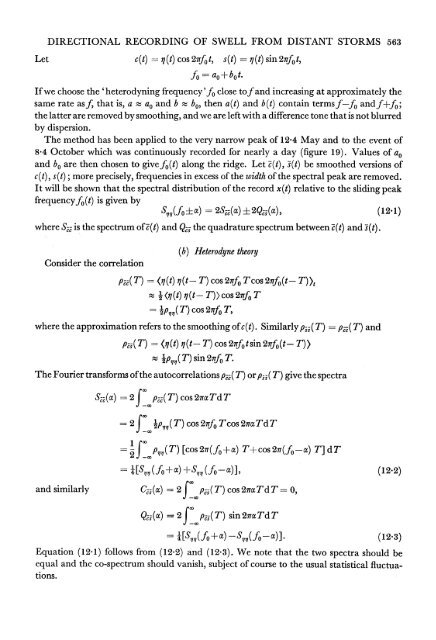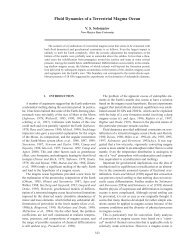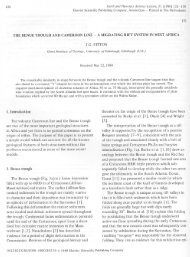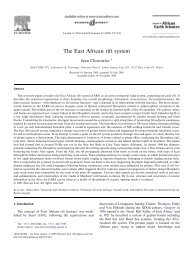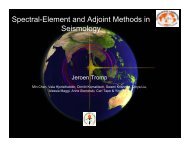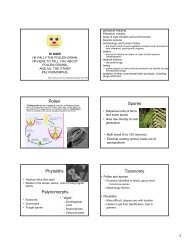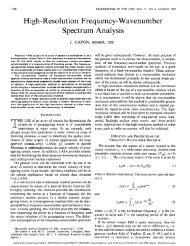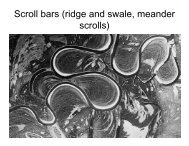Directional Recording of Swell from Distant Storms - Department of ...
Directional Recording of Swell from Distant Storms - Department of ...
Directional Recording of Swell from Distant Storms - Department of ...
You also want an ePaper? Increase the reach of your titles
YUMPU automatically turns print PDFs into web optimized ePapers that Google loves.
DIRECTIONAL RECORDING OF SWELL FROM DISTANT STORMS 563Let c(t) -(t) cos2lTfot, s(t) - q (t) sin2lTfot,foao+bot.If we choose the 'heterodyning frequency 'f0 close t<strong>of</strong> and increasing at approximately thesame rate asf, that is, a l ao and b bo, then a(t) and b(t) contain termsf-f0 andf+f0;the latter are removed by smoothing, and we are left with a difference tone that is not blurredby dispersion.The method has been applied to the very narrow peak <strong>of</strong> 12'4 May and to the event <strong>of</strong>8-4 October which was continuously recorded for nearly a day (figure 19). Values <strong>of</strong> aoand bo are then chosen to givefo(t) along the ridge. Let -c(t), s(t) be smoothed versions <strong>of</strong>c(t), s(t); more precisely, frequencies in excess <strong>of</strong> the width <strong>of</strong> the spectral peak are removed.It will be shown that the spectral distribution <strong>of</strong> the record x(t) relative to the sliding peakfrequencyfo(t) is given byS11 ( fo a) = 2SEQ (a) ? 2Q3i (a), (12.1)where SE3 is the spectrum <strong>of</strong> c(t) and Q5 the quadrature spectrum between -(t) and s(t).Consider the correlation(b) Heterodyne theorypcc( T) = (q(t) q (t- T) cos 2iqfo Tcos 21Tfo(t- T)>j~ W cos 27ffo T- p (T) cos 21Tfo T,where the approximation refers to the smoothing <strong>of</strong> c(t). Similarly ps( T) = pj(p s(T) = (q(t)q(t -T)cos27Tfotsin27Tfo(t -T)>p 7,1( T) sin 21Tfo T.The Fourier transforms <strong>of</strong> the autocorrelations pEc( T) or pss ( T) give the spectraT) andSCca) 2 j'P3j(T)cos 2rtaTd T- 2 fjapV,1, ( T) cos 21Tfo Tcos 2ira Td T= p,{p ,(T) [cos2ir(fo+ a) T-Pcos2ir(fo-a) T] dT-1w Sv, (fo +a) + S,(fo a)] (12.2)and similarly C3i (a) p= 2T) cos 2irfaTd T = 0,_00QEQ(a) = 2f pcs(T) sin 21TaTd T= s..C w rfo + ) - S. C fo - a) I (12.3)Equation (12@1)follows <strong>from</strong> (12-2) and (12*3). We note that the two spectra should beequal and the co-spectrum should vanish, subject <strong>of</strong> course to the usual statistical fluctuations.


